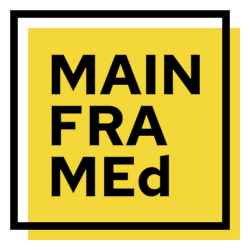Applied VTAM
Code: AVTAMBeen everywhere and found nothing…
Do you need a Custom Course or Solution?
Description
This course is designed to cater for the needs of a wide range of VTAM networking systems programmers, from beginners to seasoned experts.
Audience
This course is designed to cater for the needs of a wide range of VTAM networking systems programmers, from beginners to seasoned experts. It is in two sections of 2 days each and is best run with the two parts delivered back to back. The first section covers novice to intermediate level and the remaining two days covers the advanced material. A complete beginner should take the first section immediately and plan to attend the second one later. People with some VTAM experience will appreciate and benefit from the whole course. An existing expert may wish to take the second half only.
Prerequisites
Experience in any aspect of networking and in any IBM Enterprise System discipline will be helpful for the first two days of the course. For the advanced topics on the third and forth days a grounding in VTAM is essential.
Delegates are advised to bring a copy of their network definitions to the class so that they can relate the theory to their own installations.
Objectives
This course consists of lecture and discussion sessions with paper exercises. There are no hands on labs although delegates are encouraged to bring real materials (customisation and definition datasets, traces, syslogs, dumps, etc.) to work with where security rules permit.
On completion of the whole course delegates will be able to:
- Describe where VTAM fits in the enterprise and what it does.
- Outline SNA and the other forces which have shaped VTAM.
- Describe VTAM's inter-relationships with other network products.
- Perform all the routine tasks associated with VTAM.
- Implement the latest VTAM features.
- Participate in migration planning exercises.
- Tune and troubleshoot VTAM.
Topics
PART 1:
VTAM History
Early networks.
From the first VTAM to LU6.2 (1975-1984):
• OS/VS2 R3.8.
• Advanced Communication Function.
• The new display system - SNA 3270s.
• SNA Network Interconnection.
• LU6.2.
Token Ring (1985).
Low Entry Networking (1986).
3270 Emulation (mid 1980s).
Ethernet (1990).
APPN (1992).
HPR (1995).
Comms Server/SNA.
The future of VTAM - migration scenarios.
SNA - The Blueprint for VTAM Networks
Nodes and Links.
The 7 layer network model.
Network accessible units and the path control network.
Session management.
Session flows and protocols.
Network Product Summaries
VTAM.
3475/NCP.
NetView.
TSO.
CICS and IMS.
Session managers.
Performance monitors.
Novell Netware, Microsoft SNA Server, etc.
Cisco, Bay, Wellfleet, etc.
3746-950 NNPand MAE.
VTAM Setup, Configuration and Operation Basics
Installation overview.
Customisation overview.
Resource definition overview.
Application definitions.
Generalities of defining PU's and LU's.
Attaching NCP to owning hosts and data hosts.
Old fashioned local resources.
Switched Resources.
Start options and configuration lists.
Basic VTAM operator commands.
PART 2:
Advanced VTAM Setup and Configuration
Navigating the manual library websites and reference materials.
Subarea PATH and COS tables.
USS tables.
Logon mode tables.
Model and associated LU tables.
Other Customisation tables and exits.
Gateway LAN-attached resources.
NCP LAN-attached resources.
External communications adapter.
Multi-pathchannel definitions.
Multi-domain search definitions.
Dynamic updates.
NCP disk operations.
VTAM in a Sysplex Environment
Generic resources.
Multi-node persistent sessions.
CICS considerations.
VTAM Performance and Tuning
Buffer pools.
Name and address tables.
Channel tuning.
Optimizing searches.
Route congestion thresholds and pacing windows.
VTAM Troubleshooting
Console messages, sense codes and event IDs.
Data formats.
Buffer trace.
Channel trace.
Internal trace.
Reading data areas and diagnostic charts.
IBM and non-IBM diagnostic tools (IPCS, TMON, Omegamon).
SNA Network Interconnection Set-up Sizing and Tuning (Optional Topic)
VTAM in APPN and HPR Networks (Optional Topic)
Price (ex. VAT)
Duration
Delivery methods
- Classroom
- On-site (at your location)
- Virtual (instructor online)
